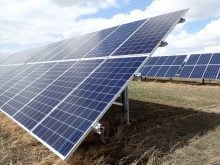Derrick Rozdeba, manager of integrated communications for Bayer CropScience, says farmers deserve thanks for their dedication to a complex industry.
Have you ever thought about where your food comes from? I didn’t, until I started working in the agriculture industry nine years ago.
I had a number of misconceptions about farming. I thought it was simple. You take a seed, you plant it, you watch it grow, you harvest it and then you sell the fruits of your labour.
This is the process, but the complexities are enormous. There are endless circumstances that need to be evaluated and responded to, most of which the farmer has little control over.
Read Also

Farmer ownership cannot be seen as a guarantee for success
It’s a powerful movement when people band together to form co-ops and credit unions, but member ownership is no guarantee of success.
What other entrepreneur builds a business model without knowing what the selling price for his product will be when he brings it to market? Weather can make or break a season. Inside a short 120 day window, which is the average number of frost-free days in Canada, the grower must get his crop from seed to market, despite whatever unusual weather patterns may be in the cue.
Today, farming is more science than art. A grower has to be a climatologist, agronomist, commodities futures expert, chemist, electrician, mechanical engineer, banker and troubleshooter.
So why get into this business? In many cases, farmers were born into agriculture and just don’t know anything else. They grew up on the farm and are the next generation of many generations of farmers.
Ask them why they stay and you’ll hear about the freedom that comes with being a steward of the land. They take great pride in raising animals and crops to literally feed the world.
Interestingly, most farmers have convinced their children that farming isn’t a viable career. As a result, a large percentage of farms are owned and operated by farmers in their 50s and older.
Have you ever worried about the cost of food? Lost sleep about the price of your next loaf of bread? Probably not. We in the developed world take for granted a plentiful supply of safe, healthy and inexpensive food every day. How does this happen with so many other things continuing to go up in price?
Successful farmers have had to build a business model based on economies of scale: become large enough to employ massive equipment to reduce their overhead costs and use high tech seeds and input products to maximize crop yields.
Technology has been the biggest advancement in agriculture in the last 20 years. GPS technology has created precision farming, which has reduced input costs.
Biotech seeds have dramatically increased yields in corn, soybean and canola.
Crop protection products have also become more selective and are used less because of the biotech crop systems that have been developed.
This also means that growers must continually educate themselves on new technologies. While we all have
FILE PHOTO
images of farmers sunbathing in Mexico all winter, in reality they are constantly going back to school to learn about new technologies and management skills.
They use down time to assess global markets to determine their next year’s crops, decide what nutrients and crop protection products are required to ensure the best yields, manage their fixed costs of labour and equipment and take inventory of their financial capital and supplier relationships.
All with the anticipation of what Mother Nature will do to help or hinder their business goals. It’s a thankless job.
So the next time you see a farmer, give him or her a hug. Say thank you for the food that they put on your plate. It’s only because there’s so much on their plate that there’s so much on yours.














